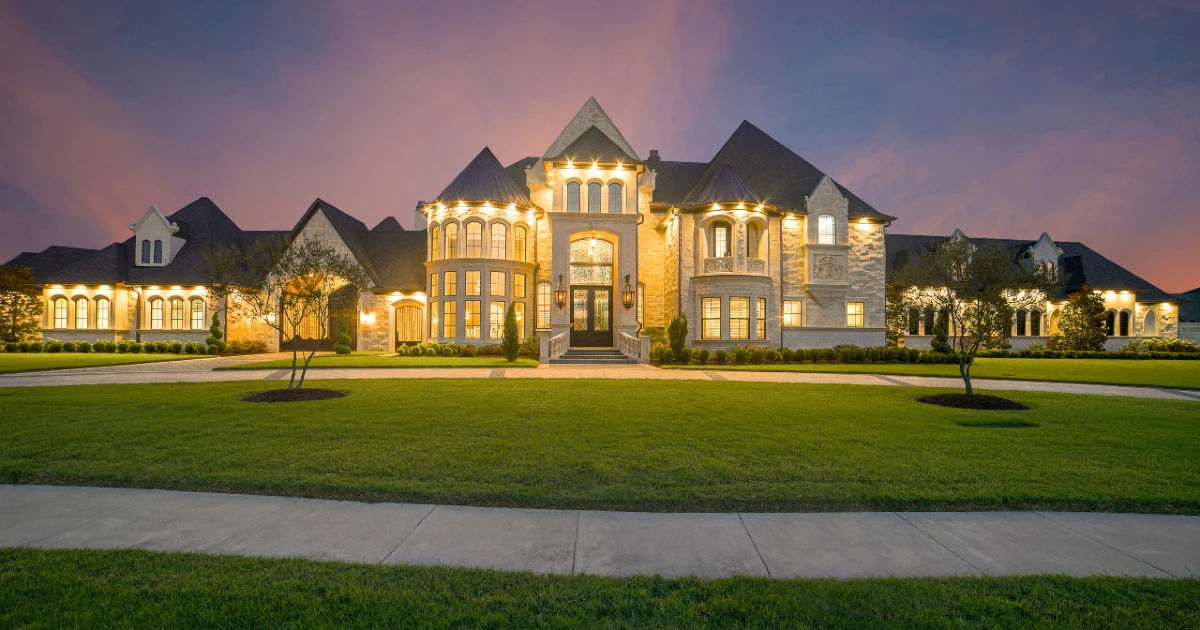West Virginia Real Estate Market Snapshot
The West Virginia real estate landscape offers a unique mix of affordability and growth. The market showcases consistent trends in median home values and sale prices that are reflective of the state's economic steadiness.
Current Market Conditions
The real estate market in West Virginia is currently experiencing a stable trajectory, characterized by a moderate pace of transactions and inventory levels. The demand for homes in the state, combined with the available supply, indicates a market that is neither overly heated nor stagnating. Data from Redfin suggests that the market's competitiveness is shaped by various economic factors, including migration patterns and local laws.
Median Home Values and Sale Prices
In terms of home values, West Virginia presents as a landscape of affordability compared to the national average. The median home value in the state has seen an increase, aligning with a broader trend of rising home prices nationwide. For a more nuanced look, RealAdvisor reports median sale prices at $249,000, marking a notable year-over-year growth of 0.9%. The market's movement points towards a cautious yet steady appreciation in property values, suggesting that the market may continue on a similar path moving forward.
Buyers' Overview in West Virginia
When considering the West Virginia real estate market, potential buyers should note the current demand and sales volume, as well as understand how mortgage rates may affect their buying power. These factors are crucial in determining the right time to purchase a home in the state.
Demand and Home Sales Volume
In West Virginia, the demand for homes has shown a mix of trends. While certain areas exhibit high demand, overall, West Virginia has experienced a decrease in home sales volume. Data from a realtor.com report indicates varied interest in key cities. Buyers should research specific local markets to gauge demand levels when considering their purchase.
Mortgage Rates' Impact on Buying Power
Mortgage rates play a significant role in determining a buyer's power in the housing market. Although fluctuating over time, mortgage rates affect monthly mortgage payments and overall affordability. Buyers are encouraged to monitor rate trends and assess their impact on the cost of purchasing a home. Rising rates may decrease buying power, while lower rates can increase it, making it a more advantageous time to buy. Current mortgage rates can be found through financial institutions and real estate market analyses.
Sellers' Overview in West Virginia
The West Virginia real estate market presents a distinctive environment for sellers, characterized by current inventory levels and the time properties spend on the market.
Inventory and Days on the Market
West Virginia's real estate landscape is marked by tight inventory, which generally favors sellers. The inventory constraints contribute to a competitive environment, where well-priced and well-presented homes can attract interest swiftly. According to recent data, homes in West Virginia are selling slower than the national average, implying that sellers should be prepared for their properties to take longer to sell. Information gathered from Redfin confirms that the days on market for homes have increased, a detail vital for sellers' expectations in timing their sale correctly.
Understanding Seller’s Market
A seller’s market is signified when demand outstrips supply, a condition that has been observed in West Virginia. Sellers in such markets generally enjoy the upper hand during negotiations and may benefit from multiple offers or selling at or above listing price. The sale-to-list price ratio in West Virginia reflects a high percentage, bolstered by the current market condition, as noted by the insights from Houzeo. This dynamic underscores the fact that those looking to sell real estate in the state can potentially capitalize on the relatively high demand versus the available inventory.
Economic Factors Affecting Real Estate in West Virginia
The West Virginia real estate market is shaped by a range of economic elements, with interest rates and levels of employment playing crucial roles. These factors not only influence buying power but also the local economies tied to specific industries.
Interest Rates and Foreclosures
Interest rates have a direct impact on the affordability of homes in West Virginia. As mortgage rates fluctuate, they affect monthly payment amounts and overall borrowing costs, influencing buyer demand. West Virginia has seen mortgage rates increase, which can lead to a higher incidence of foreclosures if homeowners are unable to manage the higher payments. A rise in foreclosures can lead to an increase in housing inventory, putting downward pressure on home prices.
Employment and Industries
Employment levels across the state are a strong indicator of the health of the real estate market. Industries such as manufacturing, which has historically been significant in West Virginia, provide important job opportunities and contribute to the stability of the local economy. A low unemployment rate signals strong economic health, which typically boosts consumer confidence and can lead to increased real estate demand. Conversely, high unemployment or significant job losses, particularly if affected by events such as the COVID-19 pandemic, can reduce market demand as fewer people have the financial stability to purchase homes.
Area-Specific Market Analysis in West Virginia
The West Virginia real estate landscape varies significantly across different areas, each with its unique market dynamics. This section dives into the specifics of Charleston, Morgantown, and Huntington, examining how each city's housing market performs in terms of pricing, demand, and trends.
Charleston Market Dynamics
In Charleston, the state’s capital, real estate market conditions have been affected by both local laws and an influx of new residents. The median house price in Charleston is reflective of these changes, and properties are consistently in demand. According to Redfin, the competitive nature of the market is evident through quick sales and a high sale-to-list price ratio, indicating a seller's advantage.
Morgantown Housing Trends
Morgantown's real estate market exhibits a steady demand due to its status as a college town, home to West Virginia University. This contributes to a robust rental market with a transient population. The median home prices have seen a marginal increase, and the inventory levels are comparatively tight, leading to a competitive market for buyers as detailed by insights from Houzeo.
Huntington Real Estate Insights
The real estate market in Huntington shows unique trends. The city has seen slower selling times compared to the state's average, and listing prices are, on average, slightly lower here than in other parts of the state. According to real estate insights from Clever, homes in Huntington sell for less than the annual average, which might present an opportunity for buyers seeking more affordable options.
Investment Potential in West Virginia
Investors looking at the West Virginia real estate landscape are finding a market where affordable housing prevails and opportunities for growth deck the horizon. Specific trends hint at investment potential, especially for those ready to engage with the lower median home values characteristic of the region.
Identifying Opportunities for Investors
The West Virginia real estate investing market exhibits a unique profile where the median home values remain among the lowest in the United States. This positions the state as a landscape ripe with investment potential for both residential and rental properties. Given the lower acquisition costs, individual investors and investment groups have the opportunity to enter the market with relatively lower capital outlay. With a lower median home value compared to national figures, a strategic investor could accumulate a portfolio of properties that leverage both market appreciation and rental income. Current real estate trends signal a continued demand for housing, supported by a steady although not rapid population growth.
ROI and Market Predictions
When discussing the return on investment (ROI) and housing market predictions for West Virginia, it's prudent to recognize the state's historically stable but modest appreciation rates. The real estate market forecasts suggest a continuation of marginally increasing home values, indicating a sustained and potentially growing ROI for future investments. For instance, homes for sale in certain segments point to a sale-to-list price ratio trending at nearly 99%, suggesting sellers are nearing their desired sale prices. In terms of real estate market trends, experts anticipate a tight inventory in 2026, which could lead to a competitive market, possibly driving up home values modestly. The average median home price has seen a slight increase year-over-year, further cementing West Virginia as an approachable market for investors looking for long-term, stable growth rather than speculative and volatile spikes.
Demographics and Market Drivers in West Virginia
The West Virginia housing market is influenced significantly by demographic shifts and the intrinsic appeal of the state's natural beauty. As people consider the cost of living and quality of life in their decisions on where to live and move, these factors become critical drivers of the real estate trends in the region.
Population Growth and Migration
West Virginia's population dynamics show a nuanced picture with migration trends playing a pivotal role in the housing market. While historically the state has seen periods of population decline, recent changes in remote work policies and an increasing desire for serene living environments have resulted in new migration patterns. These shifts are gradually transforming local demographics, thereby impacting demand in the housing market. The cost of living, which is generally lower than the national average, also makes West Virginia an attractive destination for individuals and families looking to maximize their quality of life.
Natural Beauty and Living Quality
West Virginia's natural beauty, characterized by its rolling mountains and scenic landscapes, stands as a significant attractant for new residents and contributes positively to the living quality. The state's outdoor recreation options, including hiking, rock climbing, and rafting, amplify its appeal as a desirable place to live. This allure directly feeds into the real estate market, as properties that provide access to these natural amenities tend to be in higher demand. The focus on outdoor living and the appeal of a more relaxed lifestyle are increasingly influential in drawing homebuyers to the area.
Market Timing and Seasonality in West Virginia
When considering the West Virginia real estate market, timing and seasonality play crucial roles in the decision-making process for buying or selling property. Various patterns throughout the year affect pricing, inventory levels, and overall market activity.
Best Time to Buy or Sell
The best time to buy a house in West Virginia traditionally aligns with national trends where the market experiences a surge in listings and buyer activity during spring and early summer. Conversely, sellers might benefit from listing in the spring when buyer demand is high. However, individual circumstances and local market conditions should always be considered.
- For Buyers: Aim for the cooler months when competition typically wanes, potentially leading to a better deal.
- For Sellers: List in spring to take advantage of increased buyer interest and potentially command higher prices.
Seasonal Fluctuations and Trends
The West Virginia housing market experiences notable seasonal fluctuations.
- Spring to Summer: Activity peaks, buyers are numerous, and prices may reflect this demand.
- Fall to Winter: The market often cools, mirroring the temperatures, leading to a decrease in buyer competition.
Months of supply is a critical indicator to monitor. A record high months of supply suggests a buyer's market, indicating there may be more room for negotiation.
- Months of Supply in West Virginia:
- Spring: Tighter inventory, fewer months of supply
- Winter: Increased months of supply, more options for buyers
Understanding these patterns can significantly enhance one's strategy in navigating the West Virginia real estate market.
Market Comparisons
In assessing the West Virginia real estate market, it's instrumental to draw comparisons with broader national trends, as well as to weigh its performance against regional metrics. These contrasts offer valuable context for both potential investors and residents considering the market.
West Virginia vs National Housing Trends
When examining West Virginia's housing market against the national landscape, it's noticeable that the state exhibits distinctive traits. For example, the median home price in West Virginia has shown an increase yet remains below the national average as reported by the U.S. Census Bureau. In contrast to the nation's fast-paced markets, West Virginia's growth has been more modest and consistent.
- National Median Home Price: $XXX,XXX (U.S. Census Bureau)
- West Virginia Median Home Price: $249,000 as of October 2025 reported, marking a year-over-year increase of 0.9%.
Additionally, while certain areas in the U.S. faced a cooldown in housing demand, West Virginia's market has maintained stability, with a lower but steady demand and a supply that is tight but not drastically low.
Evaluating Local vs Regional Performance
To put West Virginia's market performance into regional perspective:
- Home Sales: There has been a 24.6% decrease in home sales compared to the previous year, signaling a shift in regional dynamics. The summary of the change in home sales across regions highlights a significant decline of 24.6% in West Virginia. In contrast, neighboring states show a range of varied percentages in home sales, indicating a diverse trend in the housing market across these areas.
- Months Supply of Inventory: The state had a months supply of 3, reflecting a significant increase from the previous year, when the months supply was notably lower at 1 in October 2021.
Comparatively, neighboring states may have seen different shifts in inventory levels, indicating that local factors heavily influence the market's performance. The nuances of local economic conditions, policies, and demographics impact the West Virginia real estate market considerably and should be analyzed to understand the reasons behind these trends.
Navigating the Real Estate Process in West Virginia
Navigating the real estate process involves a strategic understanding of multiple listing services (MLS) and staying updated with new listings. It's also vital for prospective buyers and sellers to recognize the diverse types of properties and market segments, such as residential homes or properties in foreclosure.
Understanding MLS and New Listings
Multiple Listing Services (MLS) are crucial tools in the real estate market. They are comprehensive databases managed by real estate professionals that list properties available for sale. New listings on the MLS are indicative of fresh opportunities for buyers. Potential homeowners and investors should monitor these listings closely to identify available residential properties, including single-family homes.
- Key Points:
- MLS provides a centralized list of available properties.
- New listings are updated regularly, offering timely opportunities.
Types of Properties and Market Segments
The West Virginia real estate market is segmented into various types of properties, catering to diverse buyer needs. Residential properties tend to be the most common, with single-family homes marking a significant portion of the market. Buyers should also consider properties in foreclosure, which can offer unique opportunities, often requiring careful consideration regarding condition and value.
- Market Segments:
- Residential Properties: Predominantly single-family homes.
- Foreclosures: Higher risk, potentially higher reward properties.
Prospective buyers should engage with knowledgeable real estate agents and financial institutions to understand available mortgages and financing options appropriate for these different property types.
Frequently Asked Questions
West Virginia’s real estate market has specific features that may affect home affordability, predictions, investment prospects, and purchase timing. Here we address common queries to uncover the real estate landscape of the state.
What factors contribute to the affordability of homes in West Virginia?
Factors such as West Virginia's ample supply of land, lower cost of living, and efficient use of resources make homes here more affordable compared to many other states.
What are the predictions for the real estate market in West Virginia over the next five years?
Analyses suggest that the West Virginia real estate market will experience a marginal increase in the median sale prices over the next five years, largely due to tight inventory.
What makes West Virginia an attractive or unattractive location for real estate investment?
West Virginia may be attractive to investors for its natural beauty, outdoor activities, and lower property costs. However, slower economic growth when compared to some other states may make it less appealing for those seeking quick returns on investment.
How has the Charleston, WV real estate market trended recently?
The real estate market in Charleston shows trends aligned with statewide observations: moderate growth in home values with periods of adjustment.
When is the optimal time to purchase a home in West Virginia?
The optimal time for purchasing a home can be seasonal and dependent on interest rates and market inventory levels. Typically, winter months may offer better opportunities for buyers.
What is the current average cost of homes across West Virginia?
The current average cost of homes in West Virginia is around $286,000, reflecting a slow but steady growth year on year.






.png)
.jpg)
.jpg)


.png)